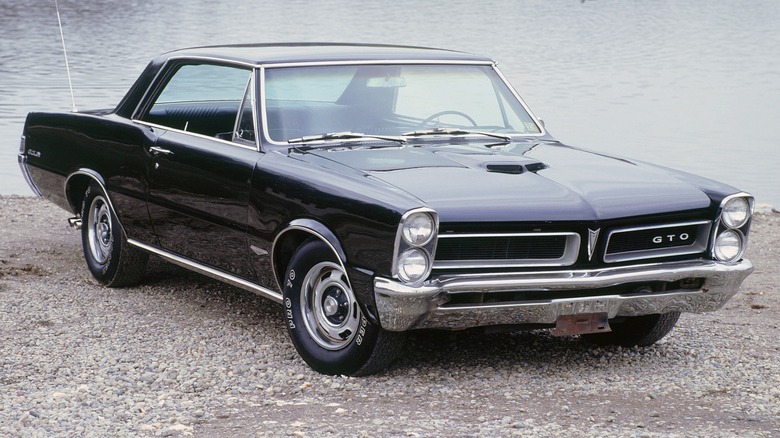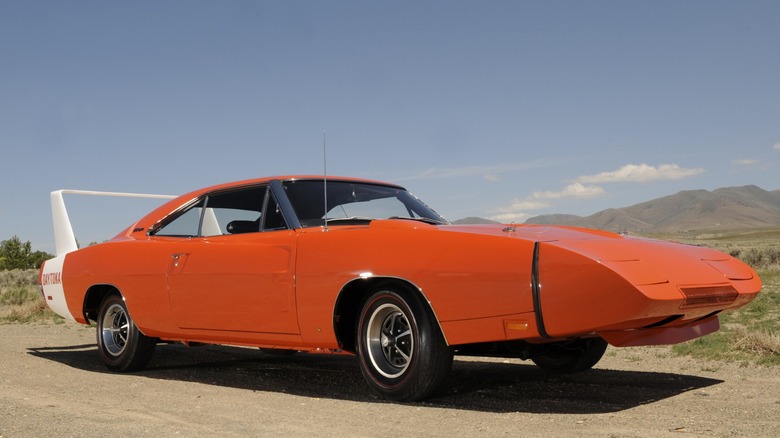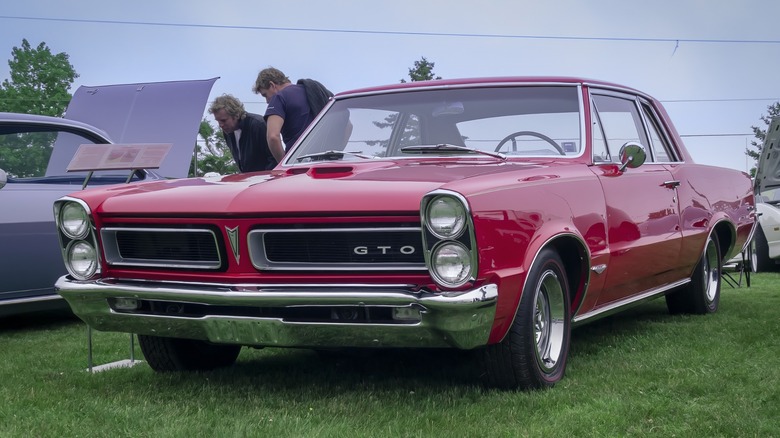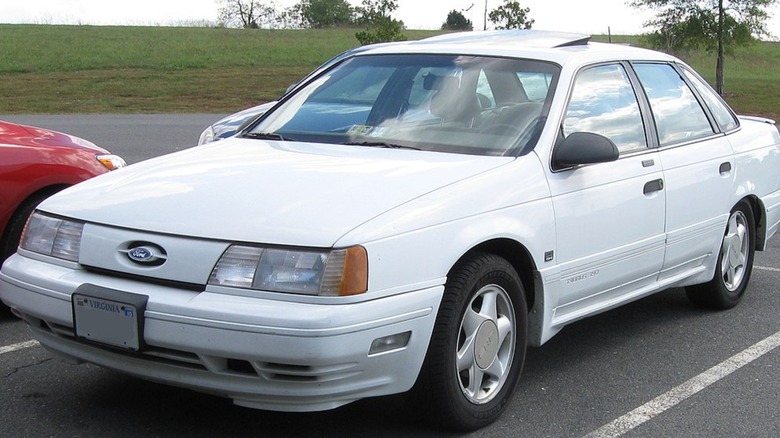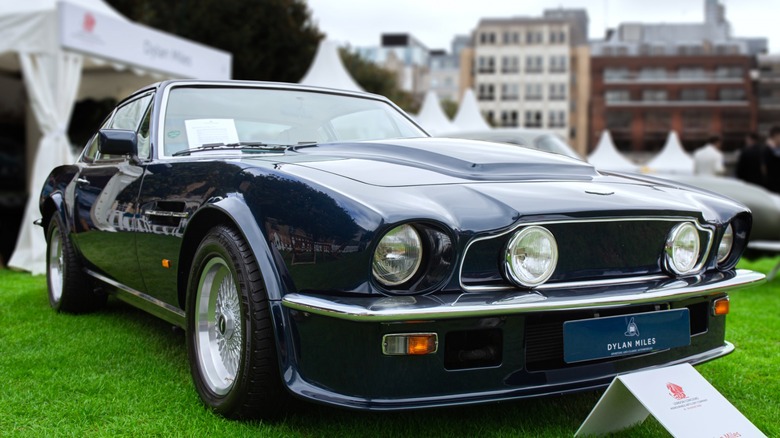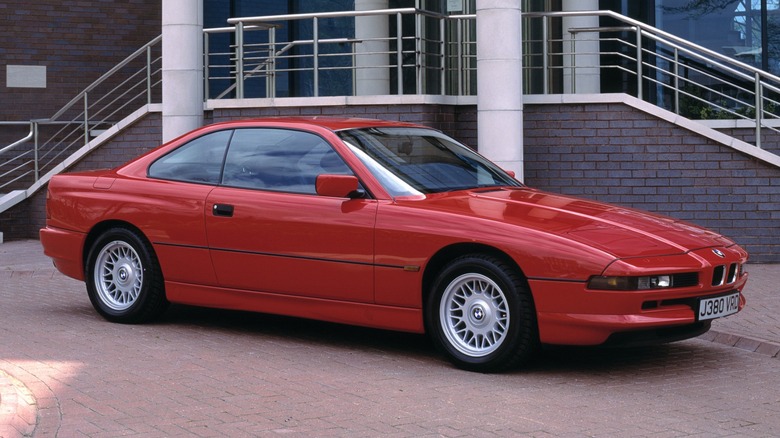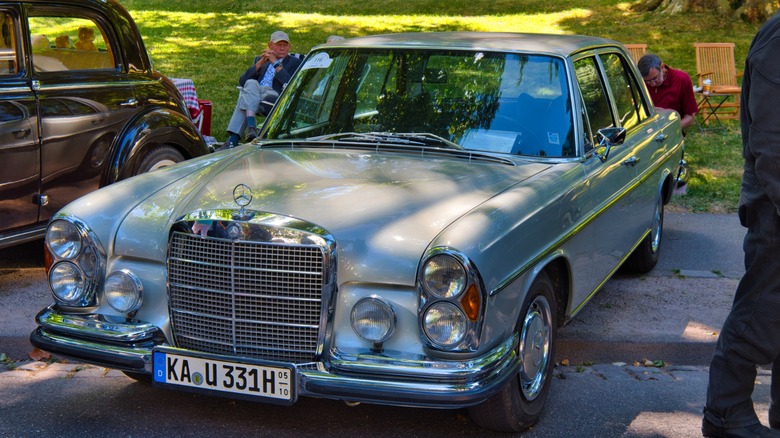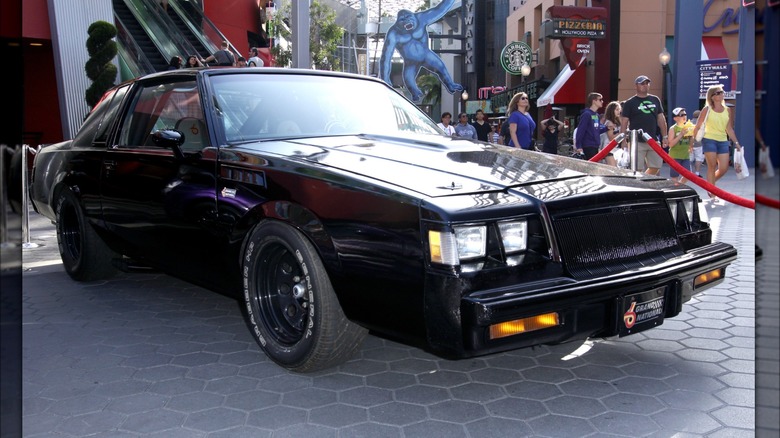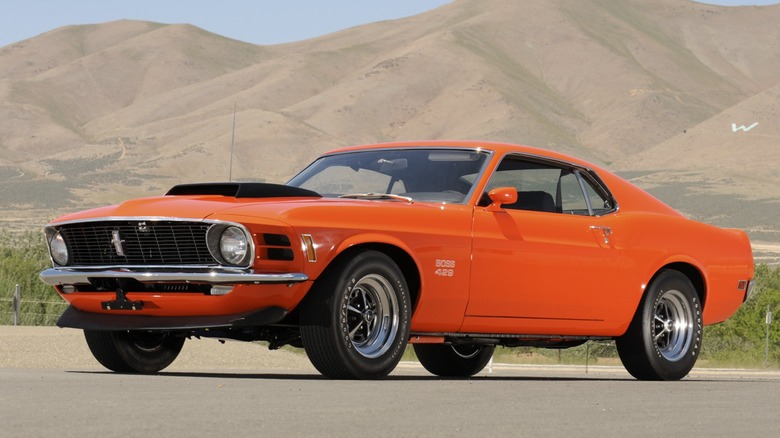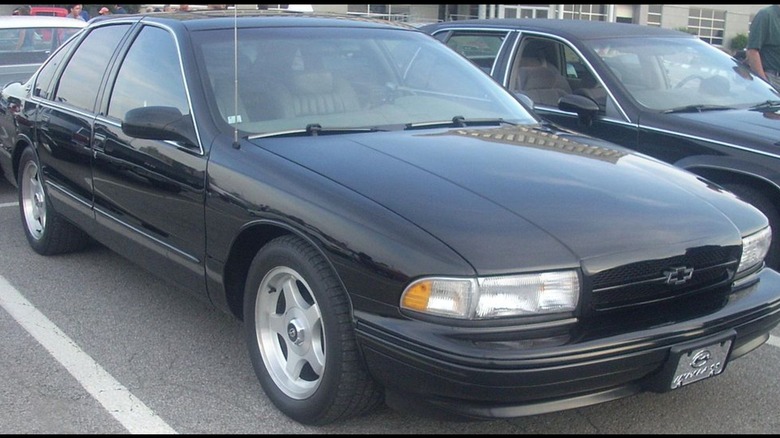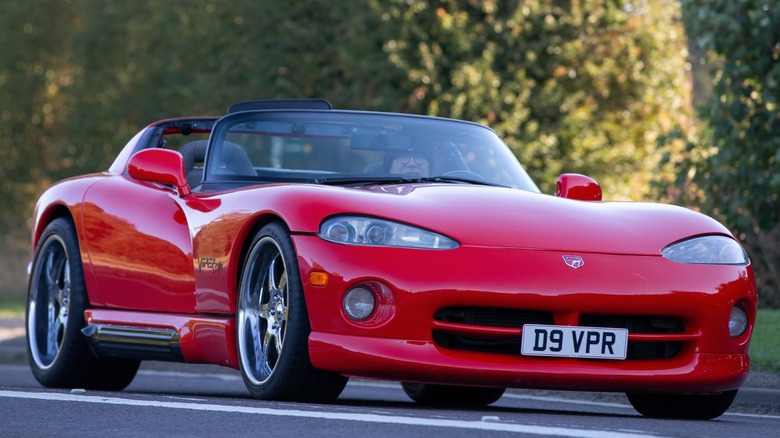10 Classic Muscle Cars That Were Ahead Of Their Time
The classic muscle car is one of the most beloved mechanical objects, especially in the United States, where it was born. The formula for a muscle car has been honed over the years but remains straightforward and simple at its roots. Using a chassis for a mid-size car, most often with two doors but sometimes four, install a large and powerful engine under the hood, and then sell it for a reasonable price. This offers the public healthy performance without the price tag of a supercar or other top-tier performance model. Furthermore, it creates a car that can book it down the track while retaining its capability of picking up the kids from school.
The heyday of the classic muscle car is roughly from the mid-'60s to the mid-'70s, but this date range is not exclusive. However, some of the most desirable and valuable muscle cars today were built at that time. Some notable highlights included the Dodge Charger, Buick GSX, and Ford Torino. These all basically fit the mold and kept in line with what had come before. Yet, some clever designers and engineers thinking outside the box managed to bring to market cars with muscle that displayed more forward thinking. Some pushed the boundaries of style, while others did so with engineering. Regardless of how they did it, these classic muscle cars had certain qualities that proved they were ahead of their time.
Dodge Charger Daytona
Back in the 1960s, NASCAR was commonly called stock car racing because it was a race of cars that came in stock form direct from the dealer and only modified for safety on the track, unlike the computer-designed tech-laden cars of today. This led to manufacturers building cars for sale to the public that were really meant to win on the track. NASCAR homologation rules stipulated a minimum number of cars to be built for sale in addition those to be raced must be built, which is why Dodge built just 503 copies of its 1969 Charger Daytona.
To gain an edge over the competition, engineers at Dodge had already just about maxed out power availability from the big-block V8 engines, so they needed to reduce drag. The solution they came up with was to add a nose cone to the front of the car to reduce drag and an extra tall spoiler to add downforce to the rear wheels. In addition to the nose, vents were added to the front wheel wells to release pressure under the hood. The results of these modifications were races won and the first car to reach 200 mph on an oval track. Dodge likely lost money on all the cars sold to customers, but the bragging rights were surely well worth the money to the marketing department. The Daytona performed so well that the aero-modifications were banned by NASCAR after just two years, essentially nixing this program and leaving the few cars built to be appreciated at modern classic car auctions.
Pontiac GTO
Much discussion in the automotive press has taken place regarding the first muscle car, including some eloquent arguments that it was the 1964 Pontiac GTO. While a definitive answer remains subjective, there will be little argument that this is an incredible car that introduced a new way of selling cars in its day.
The infamous auto executive John DeLorean managed Pontiac in the early '60s and wanted to release a version of the new LeMans with a larger engine than the 326 V8. The problem was that General Motors had in place a moratorium on high-performance cars and a ban on company-sponsored racing, stemming from some accidents that had caused bad publicity for the company. Undaunted, DeLorean sought a solution to his problem and found one. Company policy dictated that no car could be offered with a large displacement engine in a base model car but said nothing about options. Therefore, DeLorean listed the high output 389 as an option for the LeMans and called it the GTO package.
As it turns out, this was a stroke of genius, as the GTO quickly became a hot commodity and proved DeLorean's idea was solid. The 1964 LeMans GTO upped the output to 325 horsepower with a Carter 4-barrel carburetor, although the Tri-Power triple carburetor setup with 348 horsepower was optional, and moved 32,450 units the first year. This success prompted other brands to quickly find ways to mimic this success, and got GM management to relent and allow big engines on nearly anything. And thus, the muscle car era began.
Ford Taurus SHO
The 1980s are a time generally considered to be after the apex of the muscle car era. Regardless, some cars developed at the time sought to claw back some of the performance losses of the '70s with technology and better engineering. Ford created what would become the best-selling car in America with its Ford Taurus sedan, a Euro-inspired modern car for everybody. While it turned out to be a fine car with a bold new look for the stodgy old Ford, performance was not a concern. This changed with the arrival in 1989 of the Taurus SHO, a sleek new high-performance sports sedan.
Ford's Special Vehicle Operations, which worked on special low-volume performance cars, engaged Yamaha to rework the Ford Vulcan V6 to boost its output. The result of this work was a 3.0-liter engine made from aluminum block and heads with dual overhead cams and 24 valves. It also received multi-port fuel injection on a cleverly designed intake and its output was 220 horsepower, which was excellent considering Mustang output only reached 225. With the new Yamaha engine and the cars painted in a single solid color, the Taurus was dubbed the SHO for Super High Output.
The new Taurus SHO received rave reviews and demonstrated that a sleeper sedan was possible — and that Ford was the company that built it. It was unlike anything else on the market, and even held its own against contemporary BMWs, long known for building sports sedans. Furthermore, the SHO signaled the return of the muscle car.
Aston Martin V8 Vantage
Released in 1977, the Aston Martin Vantage V8 showed up at a time when horsepower was waning and the image of the muscle car was fading. Granted, the Vantage was a much more expensive car than the typical muscle car, but for a front-engine car with a V8 driving the rear wheels, nothing could top the Vantage in 1977.
The most striking aspect of the car is its design. Its aggressive stance and long hood make it look like something that would have been at home a decade earlier among 'Cudas and GTOs, only it would have had its pinky upturned like a proper Britisher. Since it is an Aston, meticulous attention to detail is present throughout the car, and the interior represents the finest in English wood and leather available for a luxury motorcar. However, under the hood is a true fire-breathing V8 engine that, thanks to its dual overhead cams and quad Weber carburetors, produced 390 horsepower — American versions were detuned to meet emissions requirements and most were mated to automatic transmissions. Furthermore, with disc brakes on all corners and independent suspension front and rear, the Vantage became the complete package, more refined than any muscle car of the era.
BMW 850i
In the late '80s, BMW approached the idea of boosted engine power with an increase in engine size and the addition of a couple of cylinders when it debuted the 1990 850i with a V12. BMW had made its name with 4-cylinder and 6-cylinder inline engines, and had last produced a V8 engine in 1965. For the creation of its new flagship 850i performance coupe, something more powerful than a straight-6 was needed. As a solution, engineers used much of the basic architecture of their inline-6 engines and essentially mated two of them together to form a V12.
The new engine built for this svelte luxury coupe integrated some of the best cutting-edge technology available at the time. The M70 V12, BMW's first, introduced electronic throttle bodies controlled by Bosch Motronic engine management. The engine controls were doubled, one for each bank of cylinders, meaning it used dual distributors, dual crankshaft sensors, dual throttles, and even had a separate ECU for each side. The redundancy this provided ensured the engine could run despite experiencing a failure of either system. The production engine, paired to a 6-speed manual or 4-speed automatic, displaced 5.0 liters and was good for 296 horsepower upon debut, but rose to 322 a few years later.
Surrounding the engine was an attractive wedge of steel, glass, and leather, enveloping passengers in the most premium experience possible for the era. Computer-aided drafting was used extensively in its design and it was an early adopter of multi-link rear suspension. Though it was expensive at nearly $100,000, its muscle utilized all the advanced technology of the day in a way no other had.
Mercedes-Benz 300 SEL 6.3
Europeans did not see an explosion of muscle cars in the '60s the way Americans did. Instead, they had to choose from high-strung compact speeders or wholly impractical supercars. But in what was part experimental tinkering and part accident, Mercedes created the first Euro muscle in 1969.
This model came about as an engineer working at Mercedes had been putting together a prototype in which he wanted to stuff the 6.3-liter V8 built solely for the 600 Grosser limousine, the favorite of heads of state around the world, into the W109 chassis. When an executive working late heard a W109 coupe running around a test track emitting the familiar V8 growl, he immediately asked the engineer what it was. Eventually, Mercedes released a production version with the 6.3 stuck in the 300 SEL sedan.
Never before had any European company released anything like this. It was a proper Mercedes vehicle, replete with extremely solid build quality, comfortable ride, and well-appointed interior like every other model, except this one had a huge boost of power under the hood. Horsepower was rated at 247, which translates into a 0-60 time of 6.5 seconds and a top speed of 137 mph. It turns out that people wanted a big and fast Benz, leading to 6,526 copies being sold. The best part about this car is the lack of any appearance modification except a single 6.3 badge, leaving everyone blindsided by its incredible acceleration — on the track or at the stop light.
Buick GNX
The muscle car heyday wound down in the '70s, as emissions controls quickly lowered the possible output of all cars. At the same time, technological advancements started to become available, allowing intrepid engineers to begin creating a new breed of high-performance cars that could also meet the increasingly strict regulations. It was in this period that Buick developed a program to offer turbocharged versions of its 3.8-liter V6 engine in a few models. Eventually, with the addition of electronic fuel injection, this was offered in a special version of the popular Regal model called the Grand National.
The Grand National was a hit, originally coming out with a 235-horsepower rating from a V6, something unheard of in an American car. Power increased to 245 in 1987, and the automotive press continued to sing its praises as Grand Nationals embarrassed Camaro, Mustang, and Corvette owners everywhere. As the old platform was slated to be replaced by new front-wheel-drive models, one last production run of 547 cars was approved, with modifications by ASC/McLaren boosting output to an incredible 276 horsepower with 360 ft-lb of torque, placing it within reach of European exotics of the time.
This last hurrah was called the Buick GNX and came with an upgraded turbo, heads, exhaust, and suspension. It was an incredible performer and signaled the end of an era, as the days of rear-drive cars, except for a few performance models, were ending and the old style of muscle car would soon be gone. As a symbol of the end of an era, the GNX was an exceptional last hurrah.
Boss 429 Mustang
For just two years, Ford released a special big-block version of the popular Mustang. It was created for homologation purposes to enter NASCAR races and was built in limited numbers. Both the Boss 302 and Boss 429 were designed by famed automotive designer Larry Shinoda after he left a long career at GM. Having proven his chops, Ford gave him a long leash to work on these special-edition cars.
The Boss 429 is a project centered around the engine, which is a formidable piece of machinery. It uses semi-hemispherical combustion chambers on its custom-designed aluminum cylinder head and they are bolted onto a 429-cubic-inch block with four-bolt main caps that secure a forged steel crankshaft. Topping it off is an aluminum high-rise intake with a 735-sfm Holley carburetor featuring a ram-air intake scoop. The Mustang was never intended to have such a large engine, so work was done to make room for it. The control arms were moved to be lower and wider for better handling, and the suspension received heavy-duty shocks and springs, along with reinforced shock towers. Fender flares accommodated wide tires, and the body received front and rear spoilers.
Only 1,356 of these were built in 1969 and 1970. They were extremely special hand-built custom Mustangs that demonstrated the limits of what could be done with the chassis, although actual racing performance came up a bit short.
Chevrolet Impala SS
By the '90s, rear-wheel-drive had become the exception rather than the rule. Everything had switched to the front except for high-performance sports cars and full-size family sedans, such as the Chevrolet Caprice. But this did not mean the desire for the old-style muscle car had evaporated, it's just that nobody was making any. But when Chevrolet developed the incredible Gen II LT1 5.7-liter V8 engine, some at GM saw an opportunity to create something new with the Caprice sedan, especially since the LT1 was being offered in cars meant for police duty.
In 1994, Chevrolet released the new Impala SS. It featured a 260-horsepower LT1 tuned to produce extra torque, and a few styling tweaks to give it a more aggressive and slightly sinister look. The exterior received a unique grille with a mild decklid spoiler in the rear. The rear quarter-window was also slightly tweaked and subtle badging was added all around, such that you end up with the ultimate sleeper for the mid-'90s sitting on five-spoke, 16-inch wheels with extra wide tires. What almost looks like a cop car was a resurgence of the classic muscle car, now with LT1 power and reliability.
The Impala SS only lasted three years, as the old Caprice platform was aging out of the system, soon to be replaced with another front-wheel-drive model. Though the muscle car had seemed to be dead and gone by 1994, this car proved otherwise.
Dodge Viper
The late '80s were a time of change in the automotive industry, when technology altered everything about how cars were built and what they could offer. Performance was seeing a comeback and interest in fast cars was high, although one could say that never really waned in the first place. Chrysler had bounced back from near annihilation, picking up exotic carmaker Lamborghini along the way. And it was with a little help from the new Italian subdivision that Dodge created the Viper.
Although it could be considered a supercar, the Viper fulfills most of the requirements of a muscle car, and it definitely employed some forward thinking in its creation. However, Chrysler had no modern HEMI at this time and its V8 engines at the time were lackluster. So, with the help of engineers at Lamborghini, Dodge pulled a V10 engine under development as a heavy-duty truck engine and reworked it for their new performance car. Though it had Italian input, the Viper engine was still a pushrod engine with two valves per cylinder and as American as ever. Nobody from Detroit had done a V10 before, and the Viper showed a new way to do performance out of Detroit. With 400 horsepower, the Viper set a new standard, and then continued to inflict its bite on the auto industry for another 25 years.
